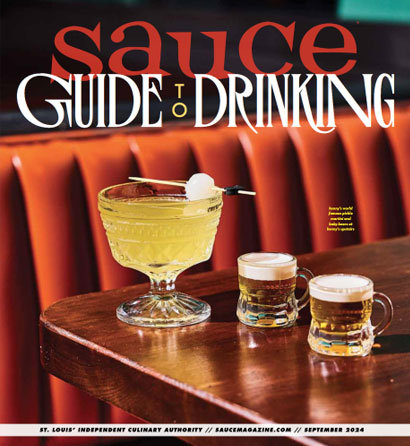With this double bill, true-crime-lovers can immerse themselves ‘In Cold Blood’
Acouple of years ago in this column, I spotlighted a sinister double feature of “Aileen: Life and Death of a Serial Killer,” a documentary about mass murderer Aileen Wuornos, and “Monster,” the dramatized account of the Wuornos story. Watching both films back to back, I suggested, would be an interesting perspective on the events, comparing the real Wuornos with her soundstage counterpart. Which was more dramatic, the scripted tale or the unadorned truth?
Now a similar true-crime double bill presents itself, and again, I think it’s too fascinating to pass up. It’s another case of art blurring the line between fiction and nonfiction, with one of the most infamous killings of the 20th century at its heart.
On a quiet Sunday morning in November 1959, the Clutter family of Holcomb, Kan., was murdered at home by two drifters, Dick Hickock and Perry Smith. Such a crime would probably go relatively unheralded today, when murder accounts pepper the evening news on a regular basis. But the brutal circumstances – parents and children bound, killed by shotgun blasts at close range, with no apparent struggle – was enough to get the story a brief article buried in The New York Times. That small article was noticed by a young writer named Truman Capote, who would turn the story of the Clutters – and their killers – into an international bestseller, “In Cold Blood.”
The remarkable success of Capote’s genre-busting “nonfiction novel” propelled “In Cold Blood” to the big screen in 1967, featuring Robert Blake as Smith, Scott Wilson as Hickock and John Forsythe as Alvin Dewey, the Kansas Bureau of Investigation detective investigating the murders. This stunning adaptation of Capote’s novel is at the Tivoli for a one-week run, starting on March 3.
The cinematic version of “In Cold Blood” did more than simply cling to Capote’s text as its source. Director Richard Brooks (who also adapted the screenplay) insisted on using as many of the story’s locations and participants as possible, including the Clutters’ house, the county courtroom where Smith and Hickock were tried and the actual gallows where the killers were hung. Six of the jurors played themselves in the film.
Capote’s attention to detail and the thoroughness of his investigation of the murders (and subsequent trial) gives this movie an unerring sense of authenticity. His willingness to extend the story to include the background and motives of the two convicted murderers, though, gives it a remarkable depth as well. It is nearly a documentary – call it a dramatic recreation – but it’s filtered through Capote’s relationship with the men and the community of Holcomb that he came to know so well over the course of six years.
Now take one step outside that perspective. Rather than looking at the Clutter murders through Capote’s eyes, look at Capote himself as he goes through his investigation. This is the purview of 2005’s “Capote,” available March 14 on DVD.
“Capote” turns the lens on the eccentric author with nearly as crisp a focus as Capote himself employed in the murders’ investigation. Had Capote not become involved, the killings would certainly have never gained their notoriety. Hickock and Smith become Capote’s obsession. He bonds with them and strives to influence their appeals trial, all the while realizing that without their conviction – and their execution – his story will lack the conclusion it demands. Capote wrestles with this dichotomy throughout the film, but his friend and assistant, Harper Lee, condemns him outright. “I couldn’t have done anything to save them,” mourns Capote. “Maybe not, Truman,” chides Lee, “But the truth is, you didn’t want to.”
Philip Seymour Hoffman becomes Capote for this film, albeit a taller, huskier Capote. It’s eerie, hearing the lispy, childlike voice coming from his lips, but Hoffman is immediately convincing, adopting the fey author’s ego and mannerisms for his own. As Lee, Catherine Keener plays Scully to Capote’s Mulder. Her morality repeatedly pulls Capote back from his own excesses, or at least castigates him when he goes too far. And the always-reliable Chris Cooper portrays Alvin Dewey with the necessary gravitas, a man struck by the horror of such brutality in his own community.
Would that the Tivoli could show these two films back to back. If you managed to see “Capote” while it was still in theaters, you can watch “In Cold Blood” with an eye toward how the writer insinuated his own agenda into historic events. Otherwise, see “In Cold Blood” at the Tivoli now, and then get the DVD and let Capote’s subtle exploitations surprise you.
To the best of my knowledge, no cocktail lounge in town has been experimental enough to offer Capote’s bizarre mix of strained bananas and Scotch. It’s just another flash of Trumania to contrast with both films’ austere western Kansas setting. A similar mélange of dining cultures exists at Iron Barley Eating Establishment in south St. Louis. Wholesome prairie fare – steaks and potatoes, or a side of toasted barley and veggies – would be the kind of thing you might have found on the Clutters’ table, while Capote might have found culinary solace in the indescribably oddly named “Ballistic Elvis Sammich.”





